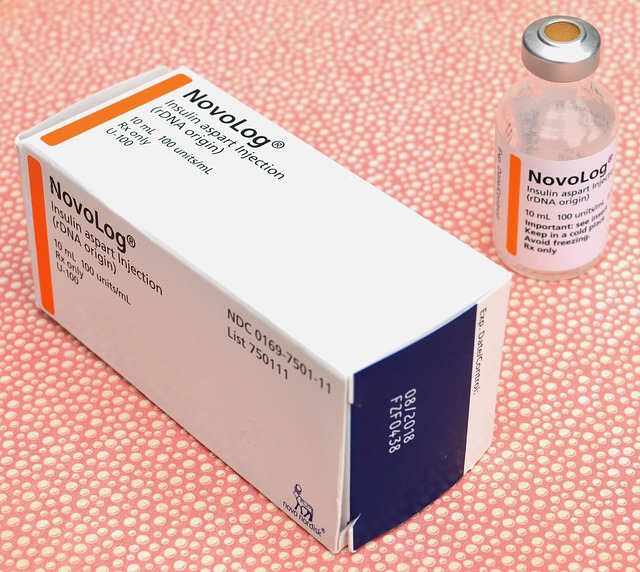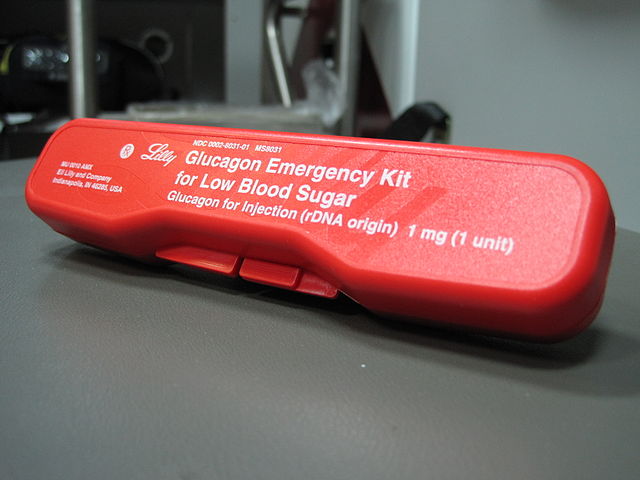Difference Between Insulin and Glucagon
What is Insulin?
Definition of Insulin:
Insulin is a hormone that is produced by the beta cells of the Islets of Langerhans of the pancreas in response to high levels of sugar in the blood.
Molecular structure of of Insulin:
Insulin is made of amino acids and consists of two chains named an A chain and a B chain, that are joined together by sulfur bonds. Insulin is produced from a proinsulin hormone that actually has three amino acid chains. An enzyme modifies the hormone in such a way that only the A and B chain remains to form insulin.
Trigger for secretion:
The secretion of insulin is mainly triggered by high blood sugar levels (hyperglycemia) in the arterial blood. Some types of fatty acids, keto acids, and amino acids can also trigger insulin secretion. As blood sugar levels decrease so the levels of insulin decrease, ensuring that no more insulin is secreted than is necessary.
Effects of secretion:
Insulin has the effect of causing the uptake of glucose into fatty tissue (adipose) and stimulating the uptake of fatty acids. Insulin also stimulates the uptake of glucose into the liver and into the muscle. In muscle tissue and in liver tissue the glucose is converted into glycogen in the process of glycogenesis. Glycogen is how glucose is stored in the human body. Insulin stops the breakdown of glycogen in the liver and stops the formation and release of glucose into the bloodstream. Insulin really triggers the uptake of glucose into the tissues and thus results in a lowering of blood sugar levels.
Abnormalities:
Diabetes is an illness in which there are problems related to insulin. In type 1 diabetes insulin is not released while in type 2 diabetes the insulin is produced but cells no longer respond to the insulin. Diabetics may have to take insulin injections to compensate for a lack of insulin.
What is Glucagon?
Definition of of Insulin:
Glucagon is a hormone produced by the alpha cells of the Islets of Langerhans of the pancreas in response to low levels of sugar in the blood.
Molecular structure of of Insulin:
Glucagon is a protein that consists of a series of 29 amino acids that are linked together. Glucagon is produced by modification of a proglucagon hormone. A prohormone convertase enzyme modifies the proglucagon to form glucagon.
Trigger for secretion:
The secretion of glucagon from alpha cells is triggered by low blood sugar levels (hypoglycemia), and by exercise. Other triggers for secretion of glucagon include epinephrine and acetylcholine. The secretion of glucagon is important in ensuring enough blood sugar is released into the bloodstream during times when a person is not eating, or during times when more sugar is needed, such as during exercise.
Effects of secretion:
Glucagon acts to increase the levels of glucose and fatty acids in the blood. It also causes the liver to break down and convert glycogen into glucose in a process called glycogenolysis. The result is that blood glucose level will increase.
Abnormalities:
The presence of a tumor in the alpha cells of the pancreas can result in too much glucagon being produced. Cirrhosis of the liver can also result in high glucagon levels (hyperglucagonism).
Difference between Insulin and Glucagon
-
Definition
Insulin is a hormone secreted by the beta cells of the Islets of Langerhans in response to high blood sugar levels. In comparison, glucagon is a hormone secreted by the alpha cells of the Islets of Langerhans in response to low blood sugar levels.
-
Molecular structure
Insulin consists of 51 amino acids formed from an A and B chain that is linked together, while glucagon consists of 29 amino acids.
-
Precursor molecule
Insulin is formed from a proinsulin precursor while glucagon is formed from a proglucagon precursor molecule.
-
Trigger for secretion
Insulin is secreted most often in response to high blood sugar levels, but also when certain keto acids, fatty acids, and amino acids are present. Glucagon is secreted in response to low blood sugar levels and in response to exercise, epinephrine, and acetylcholine.
-
Effects
Insulin has the effect of decreasing levels of blood sugar and fatty acids. It stimulates the uptake of sugars into the liver and conversion of glucose into glycogen. In comparison, glucagon has the effect of increasing levels of blood sugar and fatty acids. It increases the breakdown of glycogen to form glucose.
-
Abnormalities
Diabetes type 1 and type 2 can cause too little insulin to be produced or a there can be a reduced response to insulin. An alpha cell pancreatic tumor or cirrhosis of the liver can cause too much glucagon to be produced.
Table comparing Insulin and Glucagon
Summary of Insulin Vs. Glucagon
- Insulin and glucagon are both endocrine hormones that are involved in blood sugar regulation.
- Insulin and glucagon work in opposition to maintain healthy blood sugar levels in the body.
- Insulin is secreted when blood sugar is too high while glucagon is secreted when blood sugar is too low.
- Insulin stimulates glycogenesis in which glucose is converted into glycogen for storage, while glucagon stimulates glycogenolysis in which glycogen is broken down into glucose.
- Blood sugar is decreased by insulin and increased by glucagon.
- Abnormalities in the levels of the hormones can occur. Diabetics can have too little insulin produced while people with cirrhosis or pancreatic tumors can have too much glucagon produced.
- Difference Between Rumination and Regurgitation - June 13, 2024
- Difference Between Pyelectasis and Hydronephrosis - June 4, 2024
- Difference Between Cellulitis and Erysipelas - June 1, 2024
Search DifferenceBetween.net :
1 Comment
Leave a Response
References :
[0]Cryer, Philip E. "Minireview: Glucagon in the pathogenesis of hypoglycemia and hyperglycemia in diabetes." Endocrinology 153.3 (2012): 1039-1048.
[1]Editors of Encyclopedia Britannica. “Glucagon”. Encyclopedia Britannica. Encyclopedia Britannica, 2018, https://www.britannica.com/science/glucagon
[2]Utiger, Robert D. “Insulin”. Encyclopedia Britannica. Encyclopedia Britannica, 2018, https://www.britannica.com/science/insulin
[3]Image credit: https://pixabay.com/en/insulin-diabetes-medicine-medical-2110059/
[4]Image credit: https://upload.wikimedia.org/wikipedia/commons/thumb/2/2b/Glucagon_%281%29.JPG/640px-Glucagon_%281%29.JPG




Insulin faciliates conversion of excess glucose into glycogen, a storage form of glucose while glucagon converts stored glycogen to glucose.
Nice and detailed article on the differences between insulin and glucagon.